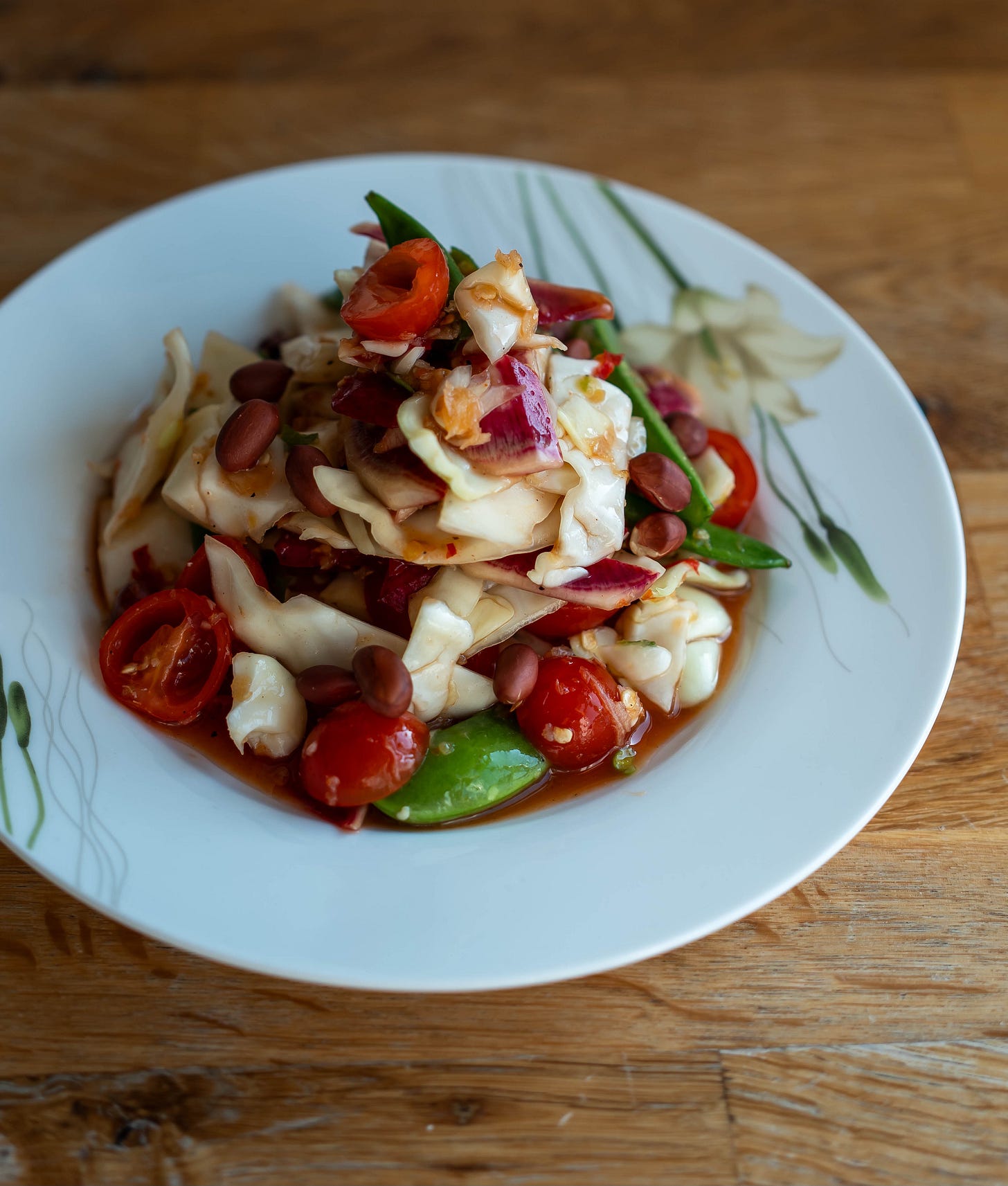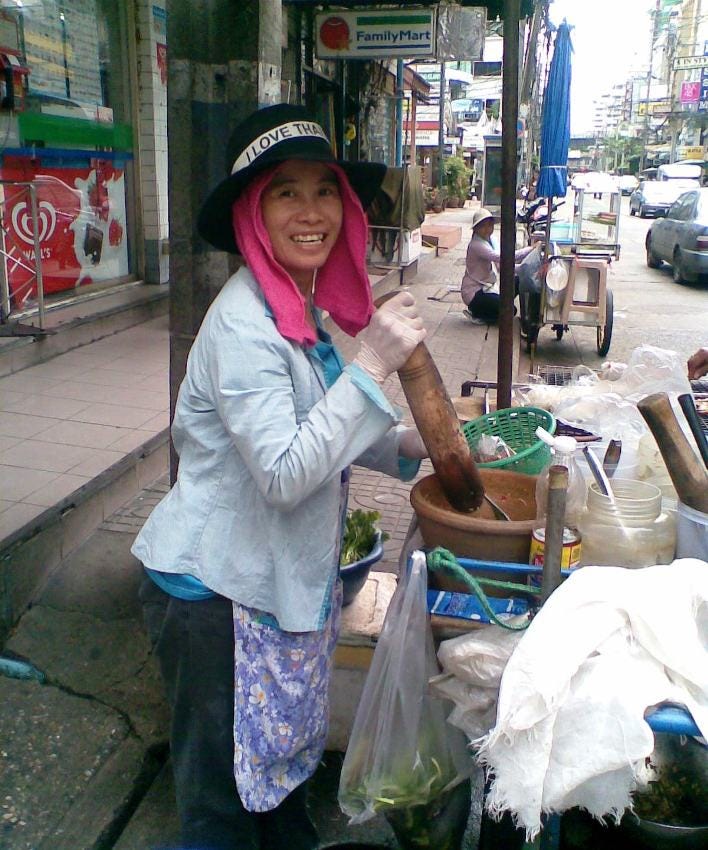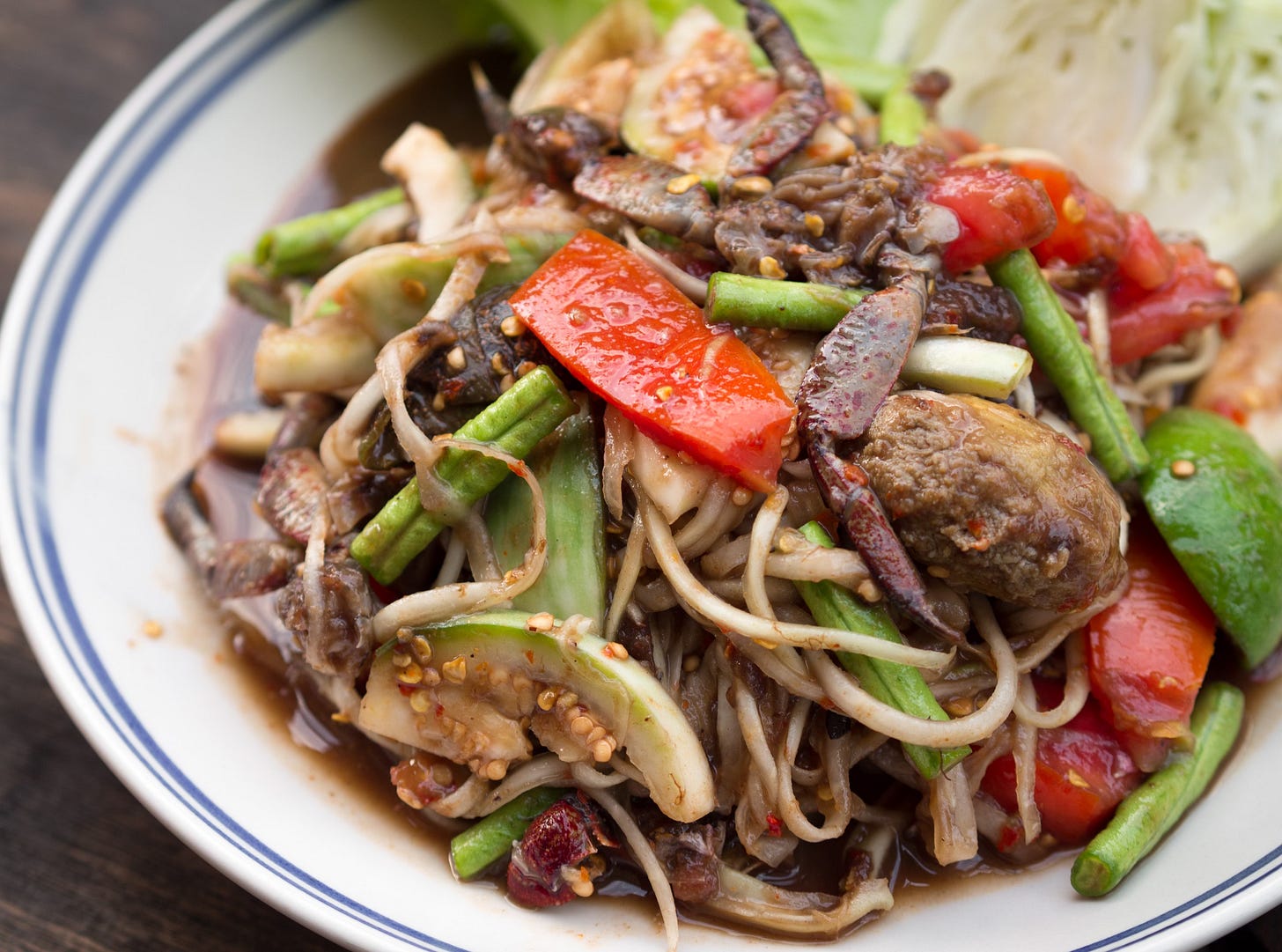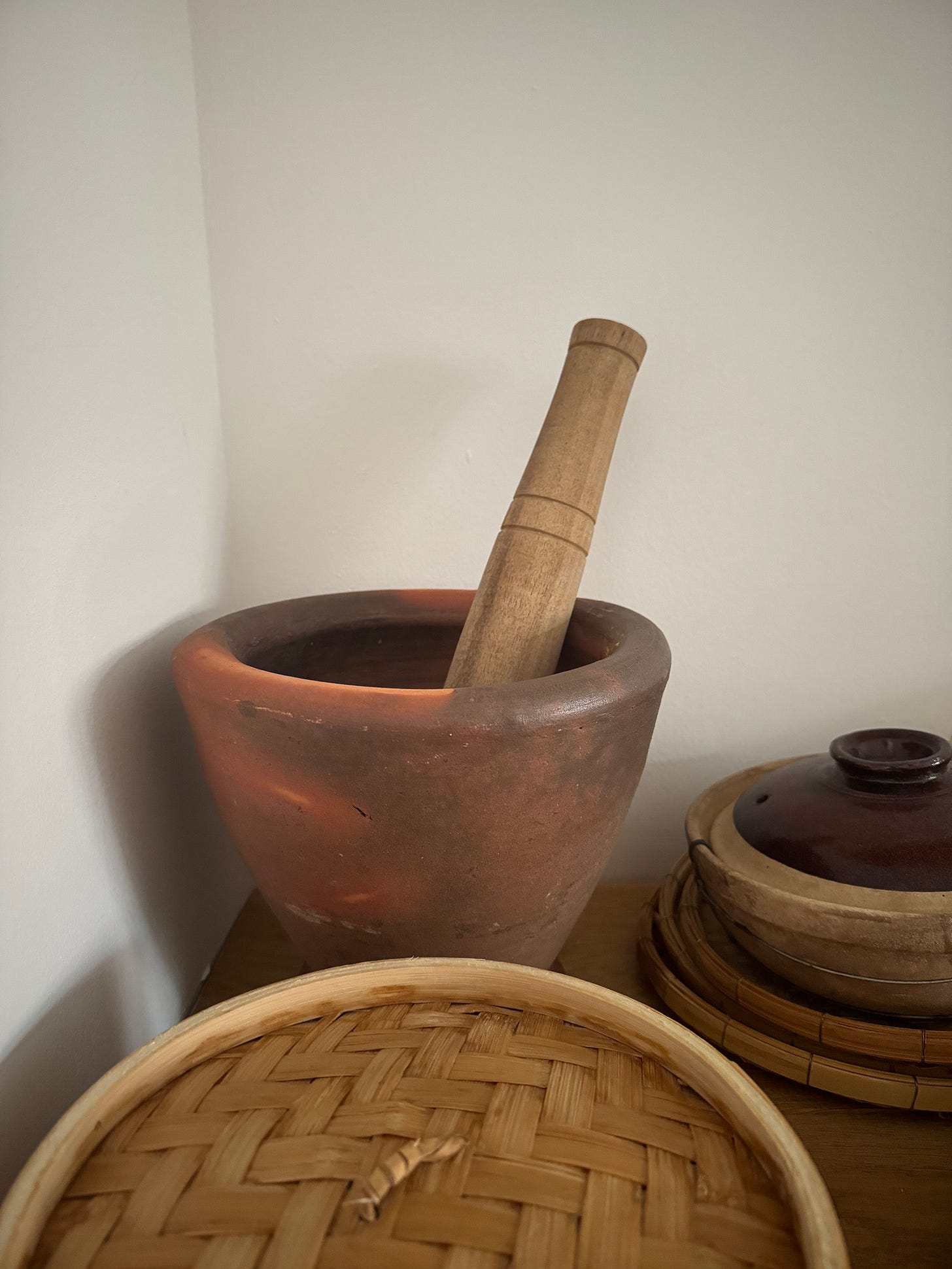
The other week, I had lunch with my friend at a new Thai restaurant in London. The food was decent, but what was surprisingly good was the ‘root vegetable som tam‘ — a simple ‘pounded’ salad of random vegetables.
Whilst som tam is commonly used to describe the famous Thai dish ‘papaya salad’, the words themselves translate to ‘sour’ and ‘pounded’, a reference to the preparation method of this dish whereby ingredients are lightly pounded in a large clay mortar with a big wooden pestle.
Numerous variations of som tam exist. There are versions with green mango, salted crab, preserved duck eggs, and a whole array of diverse ingredients. By its namesake, the dish offers a license for adaptability where one can take a variety of core ingredients, pound and mix them with chillies, garlic, and typical seasonings to make a delicious dish.
The root vegetable som tam I had the other day got me thinking about how simple it would be to make som tam at home with whatever vegetables I have on hand as a quick, simple, delicious and nutritious dish to serve with rice and fried eggs (or left over cooked meat) as a meal in and of itself.
So, I broke out the old clay mortar from its decorative resting place on my living room shelf and started making some pounded salads, eventually arriving at some very rough guidelines for making delicious som tam with what was on hand in the fridge in about 10 minutes.
Everyday som tam
My rudimentary guidelines for making ‘everyday’ som tam rest on the following rules:
-
150g of core/on-hand vegetables are enough for a single meal, served with rice
-
For every 150g of core/on-hand vegetables use 1 garlic/2chillies/2 tbs lime/1tbs fish sauce/1tbs palm sugar to dress the salad
That’s it, really. The measurements scale proportionally, so if I’m making two servings, it becomes 300g vegetables and then 1 garlic/4 chillies/4 tbs lime/2 tbs fish sauce/2 tbs palm sugar.
For the core vegetables, I find it’s best to use things that have an adequate level of crunch and sturdiness, like cabbage, radish, green beans, snow peas, cucumber (deseeded), etc., so they can bruise when pounded lightly in a mortar. The vegetables I used in the image at the start of this article were cabbage, watermelon radish, snow peas, and cherry tomatoes.
Finally, I know pounding a salad in a mortar might seem strange. I’m not sure how it emerged as a preparation technique, but I am not surprised it has endured.
Pounded salads have something other salads do not. I am going to do a shoddy job at explaining what, but in simple terms, I think the act of pounding first ensures the dressing (e.g. garlic, chillies, palm sugar, fish sauce, tamarind, lime juice) is as unified as possible. There are no uneven concentrates of sugar or chillies or garlic; everything has literally been smashed together to make the perfect melding of spicy, sour, salty, funky, and sweet.
Secondly, pounding the main ingredients together means they bruise slightly, which releases their flavour and makes the dish more delicious. Finally, mixing everything in a giant clay mortar – dressing and main parts – means the dish is dressed to the nines. Full coverage. No green bean is left unturned. No parts of the salad are unflavoured. Every single bite is an explosion of flavour.
And with that said, I hope I’ve impressed upon some of you the value of a mortar when making som tam. I know most people who read this won’t have a large clay mortar, but that’s fine. You can make this dish in a typical granite mortar if you work in batches. I’ve done it many a time.
Equally, if you’re adventurous and open to it, a som tam mortar and pestle can be picked up for as little as 20 quid. Not only do they make the preparation of this dish easy, they’re also beautiful as a decorative item. And they’re easy to clean too.
Finally, sans mortar and pestle you can make this dish by just mixing everything together. It won’t be quite the same but not far off and you’ll still have a delicious plate of food no doubt.
Everyday som tam recipe
Ingredients
-
150g core/on-hand vegetables (e.g. cabbage, green beans, cherry tomatoes, radish)
-
2 birdseye or Thai chillies
-
1 clove of garlic (I roast mine but that’s personal preference)
-
2 tbs lime juice
-
1 tbs fish sauce
-
1 tbs palm sugar
-
1-2 tbs of roasted peanuts (optional)
Method
-
In a mortar and pestle, add chillies, garlic and palm sugar and pound until a the chillies and garlic have mashed into the sugar and everything is one melded paste
-
Add lime juice, fish sauce and your 150g core/on-hand vegetables to the mortar and begin lightly pounding everything with the pestle. Whilst you are pounding, use a spoon to every now and then ‘lift’ the ingredients that are on the very bottom of the mortar to the top so that everything gets pounded and mixed together.
-
When everything is incorporated serve on a plate and eat with rice and maybe some fried eggs.



